Artillery in Ireland: Oldbridge, Ringaskiddy, Ross Castle, Rosses Point, Rosslare Harbour, Strandhill, Templemore, Tralee, Tramore, Trim Castle, and Youghal Battery
Ireland, Artillery preserved in Oldbridge, Ringaskiddy, Ross Castle, Rosses Point, Rosslare Harbour, Strandhill, Templemore, Tralee, Tramore, Trim Castle, and Youghal Battery
Oldbridge, County Meath
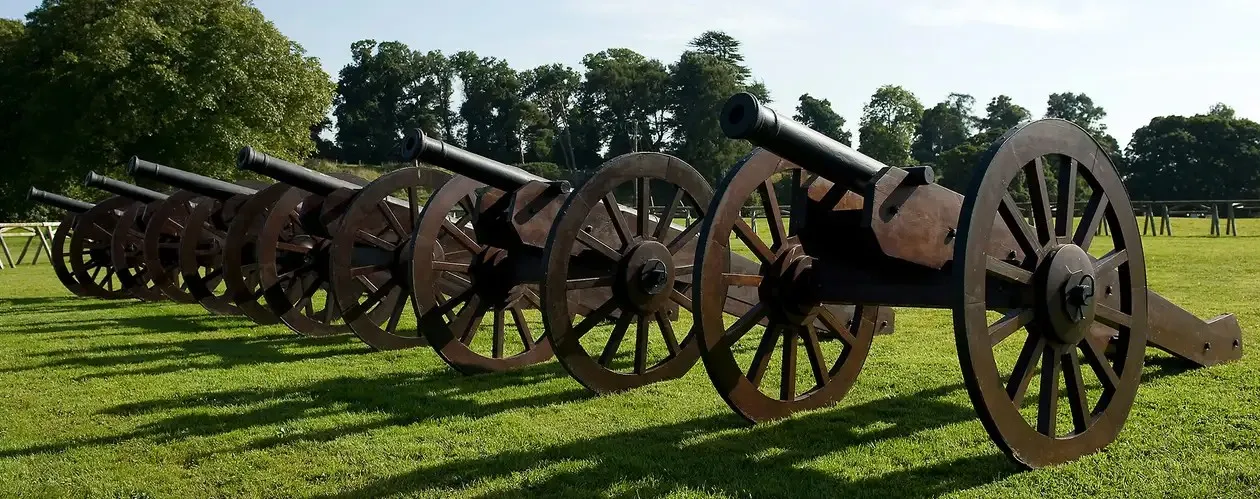
(Boyne Centre Photo)
Replica cannon in the Stableyard. The Battle of the Boyne Visitor Centre in Oldbridge, County Meath gives an in-depth insight into the battle between King William III and his father-in-law King James II in 1690.

(Graham Hogg Photo)
Replica SBML cannon, Battle of the Boyne.
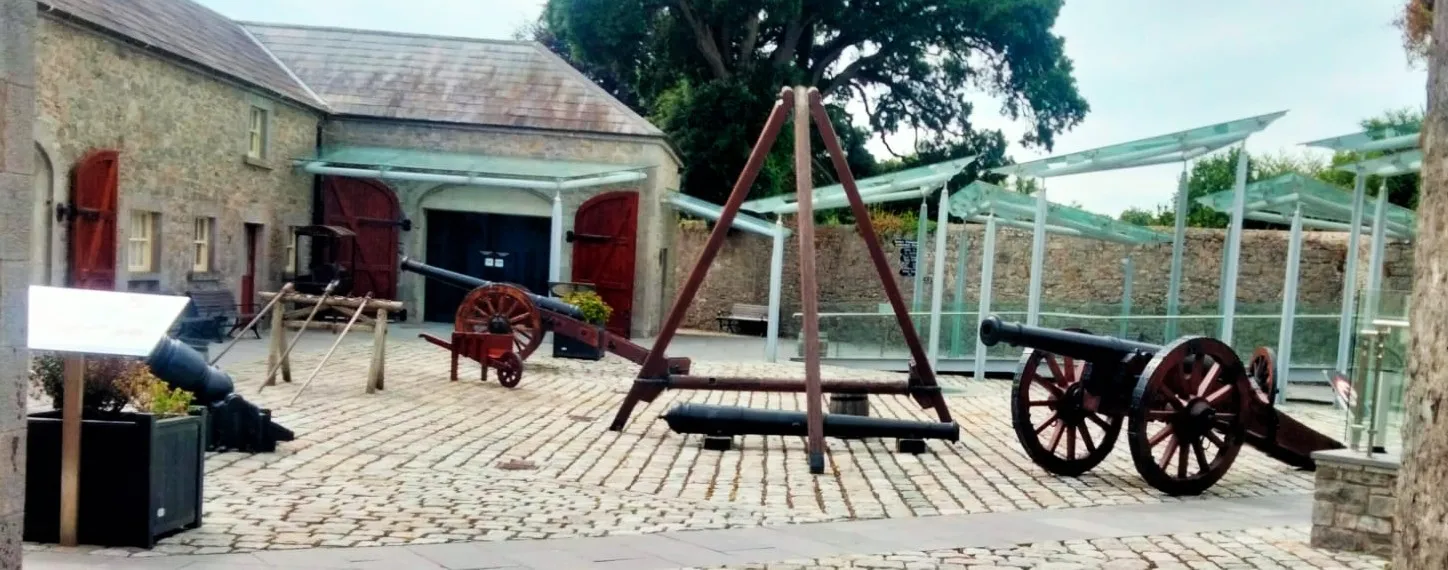
(Edward Bourke Photos)
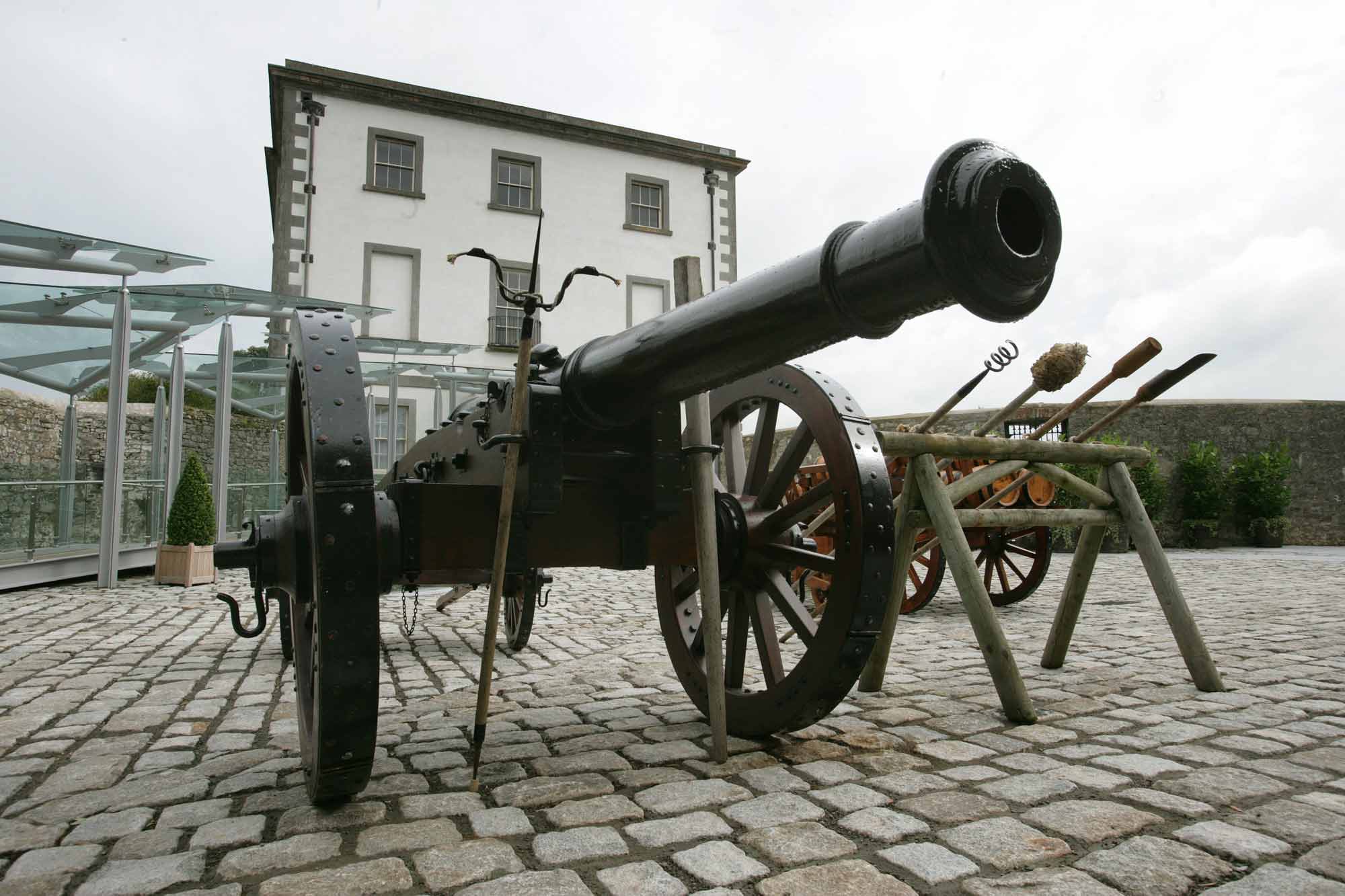
(Boyne Centre Photo)
Battle of the Boyne Centre, Old Castle, 4 SBML cannon and one Mortar. The Owens cannon from the Ulster Museum is inside, although it is from of a completely different period. I am unsure where these came from maybe a store in the midlands abandoned after Battle of Aughrim in 1691, because the campaign continued after the Battle of the Boyne in July 1690. (Edward Bourke)
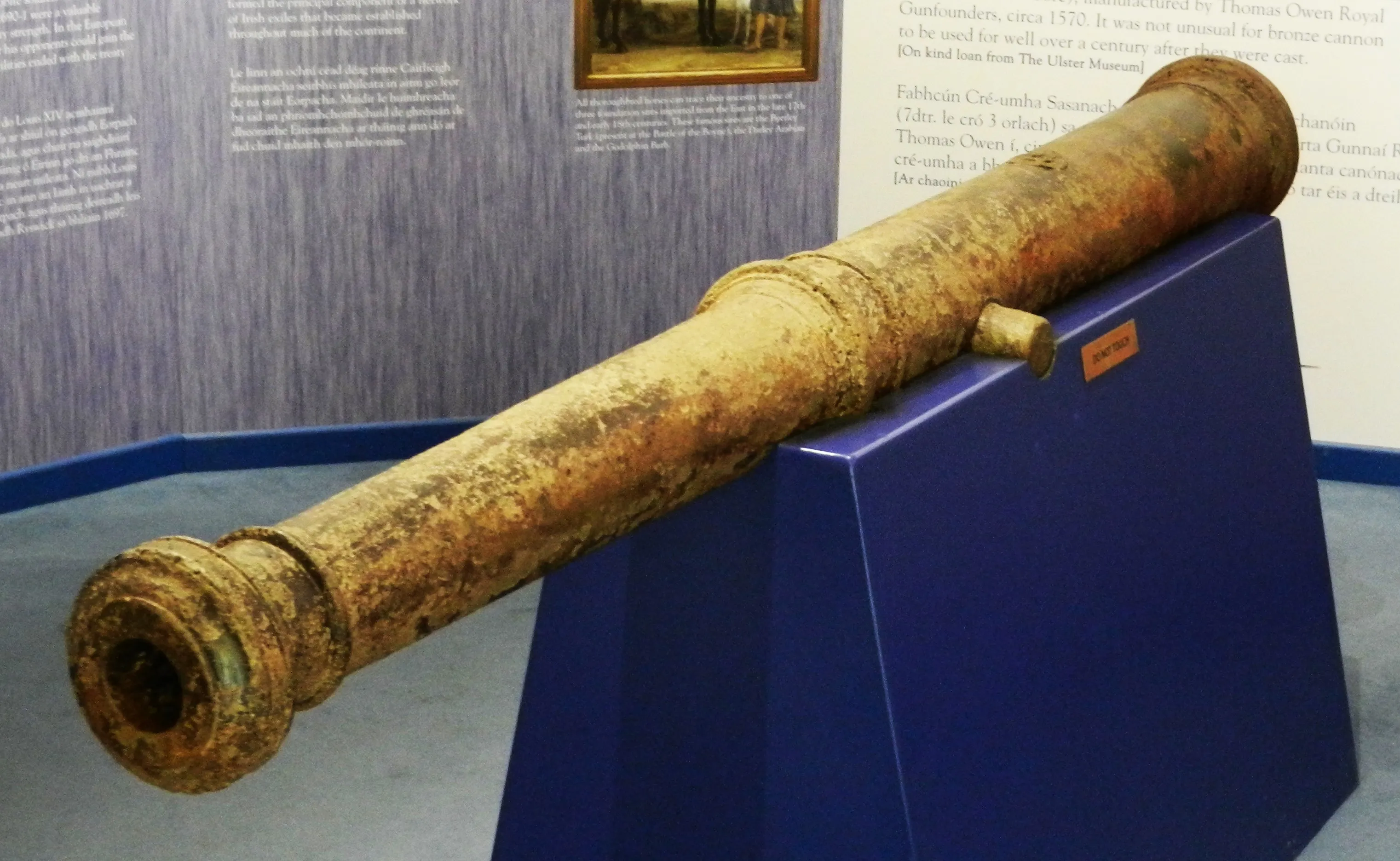
(Edward Bourke Photo)

(Metalcast Photo)
Bronze SBML Elizabethan Falcon cannon, weight 1,650 lbs, bearing a Tudor Rose motif and the date 1559 written on the side. Brought up by divers from the north-western end of the Irish Sea. They may have been ballast, thrown overboard to dislodge a grounded ship, or the cannon might have been on their way to be used at fortifications on the Irish coast when a boat they were on sank. The Boyne Centre has the cannon on loan from the Ulster Museum. All its other cannon are replicas.
Ringaskiddy


(Bruce S Photos)
Blomefield SBML Cannon located in front of the Port of Cork Ferry Terminal in Ringaskiddy, County Cork, Ireland.
Ross Castle

(Dick Ebert Photo)
Cast Iron SBML, broken button, mounted on a wood naval gun carriage.
Rosses Point

(Windsocker Photo)
Spanish SBML cannon mounted on a small naval gun carriage. This Cannon is taught to have been rescued off the wreck of a Spanish Ship sunk in Sligo Harbour.
Rosslare Harbour




(Larry Dunne Photos)
9-inch Muzzle Loading Rifles (MLR). These guns were part of the Royal Navy Gunnery Training unit which was based for many years in Rosslare.
Strandhill

(Kenneth Allen Photo)
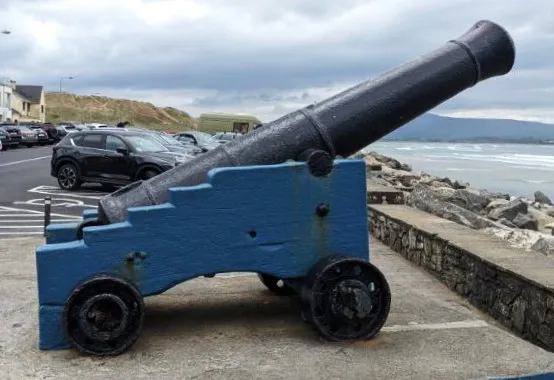
(Edward Bourke Photo)
Blomefield (possible 32-pounder) SBML Gun mounted on a wood carriage. When the battery of the Sligo Militia at Rosses Point was dismantled in 1907, Mr Murrow purchased three cannon and mounted one at the seashore where it proudly stands to this day.
Templemore
Tralee

(Geneticist007 Photo)
One of two Russian guns from Crimean war on display at Tralee, Co Kerry, Ireland with the sign: "In memory of the men of Kerry who fell in the service of their country in the wars in Russia, India and China 1854 to 1860".
Tramore

(Paul O'Farrell Photo)
A rifled muzzle loader, most likely a 64 pounder 64 cwt gun at the Doneraile Walk, Tramore, County Waterford. This gun was part of a Naval Reserve battery erected in 1891 and was originally located closer to the cliff edge at the site of the original battery.
Trim Castle, County Meath

(Trim County Tourism Photo)
Russian cannon was captured during the Crimean War in the mid 1850s. Most probably from the port of Sebastopol and gifted to Trim in thanks for the town’s support for the war, it still bears the Tzar's coat of arms, the Romanov Double Headed Eagle.
Waterford
An eleven-day siege of Waterford took place, in Waterford in 1495, after the pretender to the throne of Henry VII, Perkin Warbeck's failed attack on Deal, Kent. Warbeck was joined by Cork's Maurice FitzGerald, 9th Earl of Desmond when they went to Ireland and launched an invasion of Waterford on 23 July 1495. Supported by "foreign mercenaries", Warbeck's force besieged the city; however, its walls were well-defended and the marshes to the east of the city were flooded by the damming of St. John's River. Attacks towards the city were repulsed and were followed by counterattacks into the besiegers' camp. These counterattacks resulted in the capture of several prisoners who were dragged into the city and beheaded. The defenders also had cannons on the walls of the city in Reginald's Tower that were used to fire on the attacking ships. These cannons succeed in sinking two of the eleven ships they faced. The battle ended on the eleventh day of the siege and was a loss for Warbeck's force. Warbeck himself escaped following the failed siege, while his supporter, Maurice FitzGerald, was "forgiven" by the crown for his role in the attack .In the years following victory, the town's motto was granted by Henry VII as Urbs Intaca Manet Waterfordia ('the city of Waterford remains untaken'). This battle contains the earliest recorded use of cannons in Irish history. (Wikipedia)

(nmwalsh Photo)
Guns, placed at Reginald's Tower, were used by the city's defenders.
Youghal Battery, County Cork


(EdMooney Photos)
Two SBML cannon outside the town hall in Yougal





